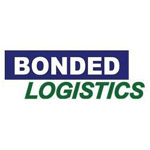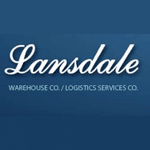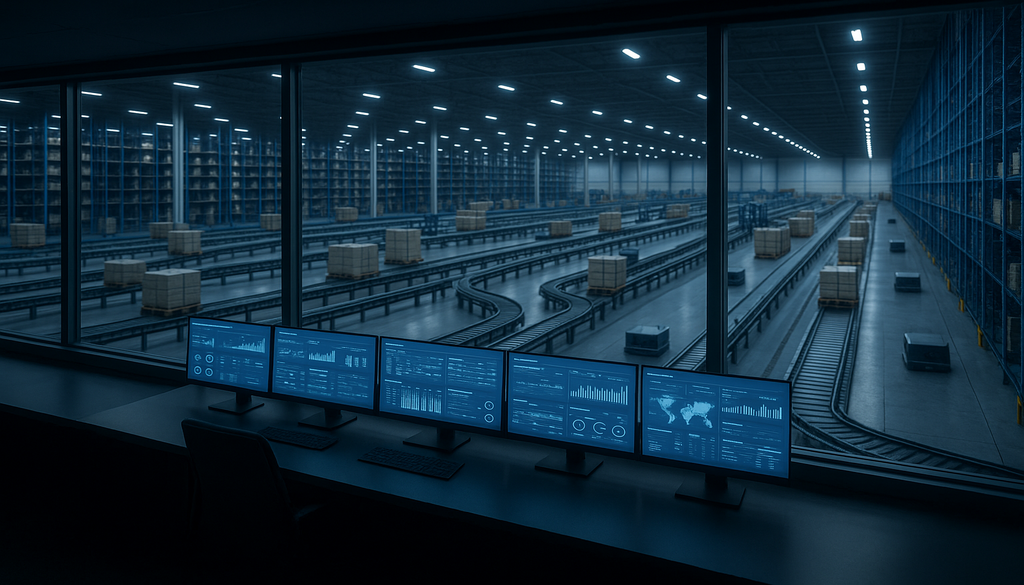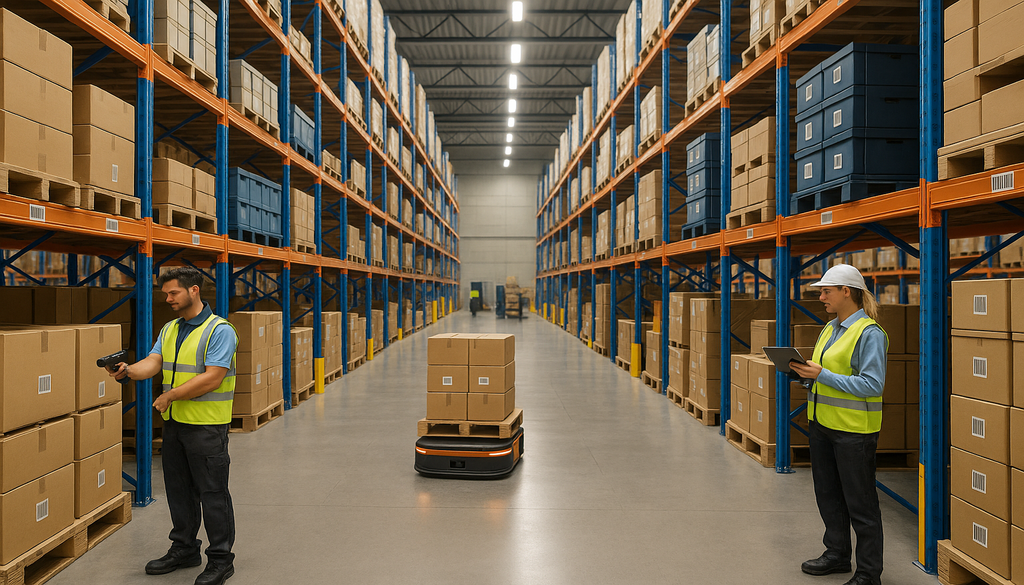Understanding Cross Docking: Key Concepts and Benefits
What is Cross Docking? Understanding the Basics
Cross docking represents a sophisticated logistics strategy where products from a supplier or manufacturing plant are distributed directly to a customer or retail chain with minimal to no handling or storage time. At its core, cross docking eliminates the traditional warehousing step of storing inventory, instead focusing on the rapid movement of goods from inbound to outbound transportation. This streamlined approach significantly reduces handling costs, inventory levels, and lead times while maintaining or improving customer service levels. In today's fast-paced supply chain environment, cross docking has emerged as a critical methodology for companies seeking to optimize their distribution networks and respond more effectively to market demands.
The concept operates on a simple yet powerful principle: incoming shipments arrive at a cross dock facility, are sorted and consolidated based on outbound destinations, and then immediately loaded onto outbound trucks—often within 24 hours or less. This continuous flow model creates a synchronized movement of goods that minimizes bottlenecks and enhances overall supply chain velocity. For logistics professionals facing increasing pressure to reduce costs while improving service levels, understanding cross docking fundamentals becomes essential to maintaining competitive advantage in an increasingly demanding marketplace.
Different Types of Cross Docking Models
Several distinct cross docking models have evolved to address varying operational needs and supply chain structures. Pre-distribution cross docking involves products that are pre-sorted by suppliers according to final destinations before arriving at the cross dock facility. This model works particularly well when dealing with predictable demand patterns and established distribution networks. Opportunistic cross docking, conversely, allows companies to make real-time decisions about whether items should be stored or immediately cross-docked based on current inventory levels and demand forecasts. This flexibility enables organizations to adapt quickly to changing market conditions while maintaining optimal inventory levels throughout their distribution network.
Post-distribution cross docking represents another common variant where products arrive at the facility unsorted and are then consolidated into outbound shipments based on customer orders or store requirements. This approach offers maximum flexibility for retailers dealing with diverse product assortments and multiple delivery destinations. Consolidated cross docking focuses on combining smaller shipments from various suppliers into full truckloads destined for the same location, thereby improving transportation efficiency and reducing freight costs. Additionally, hybrid cross docking systems incorporate elements of traditional warehousing alongside cross docking operations, allowing companies to balance immediate shipment needs with strategic inventory positioning.
How Cross Docking Differs from Traditional Warehousing Strategies
Traditional warehousing typically follows a receive-store-pick-ship model where products spend considerable time in storage before fulfillment. This approach requires substantial space for inventory storage, complex picking systems, and significant labor resources to manage the movement and tracking of stored goods. Cross docking fundamentally diverges from this model by virtually eliminating the storage component, instead focusing on rapid sorting and transfer between inbound and outbound transportation. This fundamental difference creates a dramatically more streamlined operation with significantly lower space requirements, reduced handling costs, and minimal inventory carrying expenses compared to conventional warehousing methods.
The operational focus also differs substantially between these approaches. While traditional warehousing emphasizes inventory management, storage optimization, and picking efficiency, cross docking concentrates on scheduling coordination, rapid product identification, and efficient sorting processes. Traditional warehouses function primarily as buffer zones that absorb supply and demand fluctuations through inventory holdings, whereas cross docking facilities serve as coordination points that synchronize supply with demand through precise timing. Additionally, cross docking typically requires more sophisticated transportation scheduling and higher levels of supply chain visibility to ensure the seamless flow of goods without the safety net of stored inventory that traditional warehousing provides.
The Operational Mechanics of a Cross Dock Warehouse
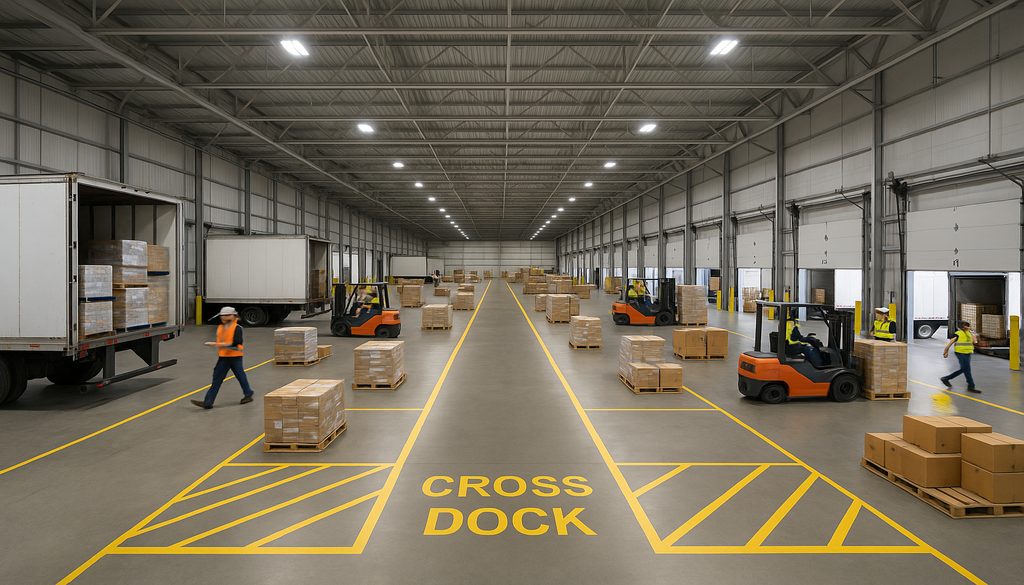
A well-designed cross dock facility resembles a large rectangular structure with numerous loading and unloading doors positioned on opposite sides of the building. This configuration facilitates the smooth flow of products from inbound to outbound transportation with minimal travel distance. The receiving area typically occupies one side of the facility where incoming shipments are unloaded, verified, and sorted according to their destinations. The central staging area serves as a temporary holding zone where products are consolidated, often arranged in lanes or zones corresponding to specific outbound destinations or routes. On the opposite side, the shipping area contains multiple dock doors where outbound trucks are loaded based on carefully planned delivery schedules and routes. This physical layout maximizes efficiency by creating a logical, linear flow that minimizes handling and accelerates the movement of goods through the facility.
Successful cross dock operations depend heavily on precise timing and coordination between suppliers, carriers, and distribution centers. The facility typically operates on tight schedules with specific time windows for receiving and shipping activities to ensure continuous product flow and prevent congestion. Floor markings, designated staging areas, and clear signage help direct the movement of goods and maintain organization within the facility. The overall design prioritizes straight-line product flow with minimal backtracking or crossover traffic patterns that could create bottlenecks or confusion. Ceiling height, column spacing, and floor load capacity must accommodate the equipment and product handling requirements specific to the operation, while adequate yard space is essential for truck queuing, maneuvering, and temporary trailer storage.
Essential Equipment and Technology for Effective Cross Docking
The equipment infrastructure supporting cross docking operations combines both manual and automated systems tailored to the specific requirements of the operation. Material handling equipment such as forklifts, pallet jacks, and conveyor systems facilitate rapid product movement between dock doors while minimizing manual handling. Sortation systems—ranging from manual sorting stations to fully automated high-speed conveyors with diverters and sorters—represent a critical component for efficiently directing products to their appropriate outbound destinations. For operations handling smaller parcels or items, automated sortation systems using barcode scanners, weight sensors, and dimensioning equipment can dramatically increase throughput and accuracy compared to manual methods.
Advanced warehouse management systems (WMS) specifically configured for cross docking provide the technological backbone for these operations. These systems coordinate inbound and outbound shipments, optimize dock door assignments, track inventory in real-time, and generate the documentation necessary for shipping and receiving. Barcode scanning or RFID technology enables accurate product identification and tracking throughout the cross docking process, reducing errors and enhancing visibility. Electronic data interchange (EDI) and advanced shipping notifications (ASNs) from suppliers deliver critical information about incoming shipments before they arrive, allowing cross dock operators to plan resources and allocate space effectively. Yard management systems further enhance operational efficiency by tracking trailer locations, managing dock appointments, and coordinating vehicle movements within the facility grounds.
Step-by-Step Process of Cross Docking Operations
The cross docking process begins with meticulous pre-arrival planning, where detailed information about incoming shipments is received through advanced shipping notifications. These notifications contain essential data about product quantities, dimensions, destinations, and arrival times, enabling the facility to allocate appropriate resources and plan the staging area layout. Upon arrival, trucks are directed to specific receiving doors based on their contents and the current facility workload. Receiving personnel verify the shipment details against the advance notification, scan product barcodes or RFID tags to confirm receipt, and update the warehouse management system accordingly. Any discrepancies or quality issues are documented and resolved according to established protocols before the products move further into the process.
Once received, products are immediately directed to their designated staging areas based on outbound destinations or customer orders. This sorting process may involve manual labor, conveyor systems, or automated sortation equipment depending on the facility's technology level and the products being handled. In the staging area, products destined for the same outbound location are consolidated into efficient loads, often building mixed-product pallets that maximize trailer utilization while meeting weight distribution requirements. The warehouse management system continuously tracks these movements and provides instructions to operators regarding product placement and consolidation requirements. When outbound trucks arrive at their scheduled times, the consolidated shipments are loaded according to route optimization plans, with final verification scans confirming accurate loading. The entire process from receipt to shipping typically occurs within 24 hours, though some operations achieve turnaround times of just a few hours for certain product categories.
Key Benefits of Cross Docking in Supply Chain Management
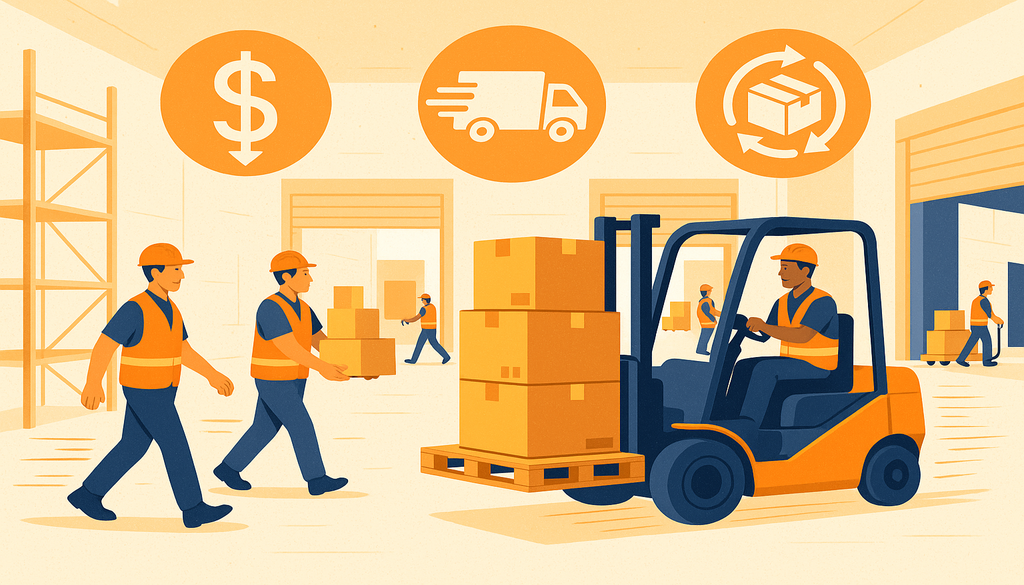
Implementing cross docking delivers substantial financial advantages through significant reductions in warehousing overhead and labor expenses. By eliminating or drastically reducing storage requirements, companies minimize the need for extensive warehouse space, racking systems, and associated maintenance costs. This space efficiency can reduce facility footprint by 30-50% compared to traditional warehousing operations, translating to lower lease or construction costs, reduced utility expenses, and decreased property taxes. Labor costs similarly decline as the labor-intensive processes of putaway, storage management, and picking are largely eliminated from the operation. Studies indicate that cross docking can reduce handling costs by 25-30% in appropriate applications, as products typically undergo only one or two touch points compared to the multiple handling steps required in conventional warehousing. Additionally, the streamlined process requires fewer administrative staff to manage inventory records, cycle counts, and stock rotations, further contributing to operational cost savings.
Cross docking also significantly reduces inventory carrying costs, which typically account for 15-30% of inventory value annually when considering capital costs, storage space, insurance, taxes, obsolescence, and shrinkage. By keeping products in continuous movement rather than static storage, companies minimize the capital tied up in inventory and reduce the associated financial carrying costs. This improved cash flow enables organizations to invest resources in other strategic initiatives or respond more nimbly to market opportunities. For products with limited shelf life, cross docking minimizes the risk of expiration and associated write-offs by accelerating movement through the supply chain. The reduced handling also decreases the likelihood of product damage during storage and picking operations, lowering replacement costs and customer returns. These combined financial benefits make cross docking particularly attractive for companies operating with tight margins or those seeking to optimize their capital utilization.
Improved Inventory Management and Reduced Holding Times
Cross docking fundamentally transforms inventory management by shifting the focus from storage optimization to flow management. This operational paradigm significantly reduces average inventory holding times from weeks or months to mere hours or days, dramatically accelerating inventory turnover rates. For retailers and distributors, this acceleration can improve inventory turns by 50% or more compared to traditional warehousing models, enhancing overall supply chain velocity. The continuous flow of goods minimizes the risk of inventory obsolescence—a critical advantage when dealing with seasonal items, fashion merchandise, or products with rapid innovation cycles. By reducing the time products spend in the supply chain, companies maintain fresher inventory at point of sale, enhancing customer satisfaction and reducing markdown requirements for aging stock.
The reduced inventory holdings also increase organizational agility and responsiveness to market changes. With less inventory committed to specific products or markets, companies can more quickly adjust their product mix in response to shifting consumer preferences or unexpected demand fluctuations. This flexibility proves particularly valuable in industries experiencing rapid technological change or fashion trends where product lifecycles continue to shorten. Cross docking enables more frequent, smaller shipments that better align with actual demand patterns, reducing the need for safety stock while maintaining service levels. Additionally, the constant movement of goods provides greater inventory visibility throughout the supply chain, as products spend less time in stationary storage where they might be miscounted or misplaced. This improved visibility enhances forecasting accuracy and enables more precise inventory planning across the distribution network.
Enhanced Customer Satisfaction Through Faster Delivery Times
In today's competitive marketplace where consumer expectations for rapid fulfillment continue to escalate, cross docking provides a significant advantage through compressed order-to-delivery cycles. By eliminating storage time and reducing handling steps, companies can typically reduce lead times by 20-30% compared to traditional warehousing models. This acceleration enables next-day or even same-day delivery for many regional customers without requiring extensive forward-deployed inventory. Retailers benefit from more frequent store replenishment cycles, reducing out-of-stock situations while maintaining lower in-store inventory levels. The improved in-stock position directly correlates with higher customer satisfaction and increased sales, as consumers increasingly cite product availability as a primary factor in retailer selection and loyalty.
Cross docking particularly benefits time-sensitive product categories such as fresh food, pharmaceuticals, or seasonal merchandise where product freshness directly impacts customer satisfaction. By reducing the time products spend in the supply chain, cross docking helps ensure that consumers receive goods with maximum remaining shelf life or seasonal relevance. The reduced handling also decreases the likelihood of shipping errors or product damage, resulting in fewer customer returns and complaints. Additionally, the operational efficiency of cross docking often allows companies to offer later order cutoff times while still meeting next-day delivery commitments, providing a competitive advantage in e-commerce and omnichannel retail environments. These service improvements translate directly to enhanced customer loyalty, increased repeat purchase rates, and positive word-of-mouth recommendations that drive business growth and market share expansion.
Implementing Cross Docking in Your Warehouse: A Practical Guide

Before implementing cross docking, companies must conduct a thorough assessment to determine whether this strategy aligns with their operational requirements and business objectives. The evaluation should begin with an analysis of product characteristics—items with stable demand, high volume, and minimal handling requirements typically present the strongest candidates for cross docking. Products with specialized storage needs, extensive customization requirements, or highly unpredictable demand patterns may prove less suitable for this approach. The assessment should also examine supplier capabilities, particularly their ability to provide consistent quality, accurate shipments, and reliable delivery timing. Strong communication systems and collaborative relationships with suppliers become essential prerequisites, as cross docking success depends heavily on precise coordination and information sharing throughout the supply chain.
An organization's existing distribution network structure represents another critical evaluation factor. Companies should analyze transportation costs, delivery time requirements, and geographic distribution of customers to determine whether cross docking would improve overall network efficiency. The assessment must include a detailed cost-benefit analysis comparing current operations against projected cross docking performance, including considerations for potential facility modifications, technology investments, and process changes. Organizations should also evaluate their current technology capabilities, particularly in warehouse management systems, transportation management, and supply chain visibility tools. The ideal cross docking candidate typically exhibits characteristics including high-volume product flow, minimal seasonal fluctuations, established supplier relationships, strong technological foundation, and clear alignment between cross docking benefits and strategic business objectives.
Challenges and Solutions in Transitioning to a Cross Docking Model
Transitioning to cross docking presents several significant challenges that organizations must address through careful planning and systematic implementation approaches. Scheduling complexity represents one of the primary hurdles, as cross docking requires precise coordination between inbound and outbound shipments with minimal timing buffers. Successful organizations overcome this challenge by implementing advanced scheduling systems, establishing firm appointment windows, and developing contingency plans for addressing inevitable disruptions. Information flow limitations can similarly undermine cross docking effectiveness, particularly when organizations lack real-time visibility into inbound shipments or outbound requirements. Leading companies address this challenge by implementing integrated information systems that connect suppliers, carriers, and distribution centers through EDI, API connections, or shared cloud platforms that provide end-to-end visibility and facilitate rapid communication.
Physical infrastructure limitations may also impede implementation, especially when existing facilities lack sufficient dock doors, appropriate layouts, or adequate staging areas for cross docking operations. Organizations can overcome these constraints through strategic facility modifications, reconfigured process flows, or in some cases, establishing dedicated cross dock facilities designed specifically for this purpose. The transition also requires significant workforce adaptation as employees must shift from storage-oriented processes to flow-based operations requiring different skills and performance metrics. Successful implementations include comprehensive training programs, clear communication about the reasons for change, and revised performance metrics that align with cross docking objectives. By addressing these challenges proactively and implementing appropriate solutions, organizations can navigate the transition successfully and begin realizing the benefits of cross docking while minimizing operational disruptions.
Case Studies: Successful Cross Docking Implementations
A major retail chain successfully implemented cross docking for their fast-moving consumer goods, resulting in a 28% reduction in overall supply chain costs and a 35% improvement in inventory turns. The company began with a pilot program focusing on high-volume, standardized products with predictable demand patterns. Their implementation strategy centered on collaborative planning with key suppliers, establishing consistent delivery schedules, and investing in advanced scanning technology to ensure accurate product identification and routing. After demonstrating success with these initial product categories, the retailer gradually expanded their cross docking operations to include seasonal merchandise and promotional items, ultimately processing over 70% of their total volume through cross docking facilities. The initiative reduced average lead time from seven days to less than two days while decreasing product damage by 15% due to reduced handling.
A global automotive parts distributor provides another compelling example of effective cross docking implementation. Facing pressure to reduce delivery times to service centers while controlling inventory costs, the company transitioned from a traditional hub-and-spoke distribution model to a cross docking network for their most commonly ordered replacement parts. The implementation focused on redesigning their information systems to provide real-time visibility of parts availability and movement throughout the network. By establishing regional cross docking facilities strategically located to serve multiple markets, the company reduced average delivery time from 3-5 days to next-day service for 85% of their service locations. The initiative decreased inventory carrying costs by approximately $15 million annually while improving service level agreements from 92% to 98% on-time delivery. These improvements significantly enhanced customer satisfaction among service centers and contributed to a 12% increase in parts business over the following two years.
Future Trends and Innovations in Cross Docking
The future of cross docking will be shaped by technological advancements that enhance coordination, visibility, and process efficiency throughout the operation. Internet of Things (IoT) sensors embedded in products, pallets, and transportation equipment will provide unprecedented real-time tracking capabilities, enabling continuous monitoring of product location and condition throughout the cross docking process. Advanced analytics and machine learning algorithms will increasingly analyze historical data patterns to predict optimal dock door assignments, staffing requirements, and potential bottlenecks before they occur. Blockchain technology stands to revolutionize information sharing across the supply chain by providing a secure, transparent record of product movements that all parties can access and trust, eliminating discrepancies between shipping and receiving records that frequently disrupt cross docking operations.
Robotic process automation will continue expanding within cross docking facilities, with autonomous mobile robots (AMRs) increasingly handling the movement of goods between receiving and shipping areas. These robots can work safely alongside human operators while dynamically adjusting routes to avoid congestion and optimize travel paths. Computer vision systems are evolving to automatically inspect incoming shipments for damage, verify product counts, and confirm proper labeling without manual intervention. Voice-directed and augmented reality systems will enhance worker productivity by providing hands-free guidance for sorting and consolidation tasks while reducing error rates. These technological innovations collectively promise to address many of the coordination challenges inherent in cross docking while further reducing handling costs and improving throughput velocity.
The Role of AI and Automation in Optimizing Cross Docking
Artificial intelligence will fundamentally transform cross docking decision-making processes through sophisticated optimization algorithms that consider multiple variables simultaneously. AI-powered dock scheduling systems will dynamically adjust appointment times based on real-time factors including traffic conditions, weather events, labor availability, and inbound volume fluctuations. These systems will optimize door assignments considering factors such as product destinations, trailer configurations, and loading sequence requirements to minimize internal travel distances and maximize throughput. Predictive maintenance algorithms will analyze equipment performance data to schedule preventive maintenance during natural operational lulls, reducing unplanned downtime that can severely impact tightly synchronized cross docking operations. Additionally, AI-driven demand forecasting will improve planning accuracy by identifying subtle patterns and correlations that human analysts might miss, enabling more precise allocation of resources and space within the cross dock facility.
Automation continues advancing beyond traditional conveyor systems to include sophisticated sortation technologies that dramatically increase throughput and accuracy. High-speed automated sorters using scanning technology can process thousands of items per hour with near-perfect accuracy, directing products to the appropriate outbound lanes without manual intervention. Automated guided vehicles (AGVs) and autonomous mobile robots increasingly handle pallet movement between dock doors, following optimized paths while adjusting routes in real-time to avoid congestion. Automated storage and retrieval systems (AS/RS) are being integrated into some cross dock operations to temporarily buffer products when perfect synchronization between inbound and outbound movements isn't possible. For parcel and small item cross docking, robotic picking systems using advanced vision systems and flexible grippers can sort diverse products by size, weight, and destination at speeds exceeding human capabilities while maintaining continuous operation across multiple shifts.
Predictions for Cross Docking in the Logistics Industry
Cross docking will likely evolve from standalone facilities into integrated nodes within interconnected logistics networks that dynamically adjust to changing conditions. These next-generation operations will feature greater flexibility, with the ability to shift between cross docking, short-term storage, and value-added services based on real-time supply and demand conditions. The distinction between traditional warehousing and cross docking will increasingly blur as hybrid facilities emerge that combine elements of both approaches, leveraging automation to optimize product flow regardless of dwell time. Micro cross docking facilities located in urban centers will facilitate last-mile delivery operations, receiving consolidated shipments from regional distribution centers and immediately transferring them to local delivery vehicles, supporting the growing demand for same-day and next-day urban deliveries while minimizing traffic congestion and environmental impact.
Environmental sustainability will become an increasingly important driver of cross docking innovation as companies seek to reduce their carbon footprint. The inherent efficiency of cross docking already provides environmental benefits through reduced energy consumption for storage and decreased overall transportation requirements. Future facilities will further enhance sustainability through energy-efficient building designs, renewable power sources, and zero-emission material handling equipment. Cross docking networks will increasingly integrate with intermodal transportation systems, facilitating transfers between trucks, trains, and ships to optimize both cost and environmental impact. Additionally, cross docking will play an expanding role in reverse logistics operations, efficiently consolidating and redirecting returned products to appropriate destinations for resale, refurbishment, or recycling. As supply chains continue evolving toward greater speed, efficiency, and sustainability, cross docking will remain at the forefront of logistics innovation, providing a critical capability for meeting the increasing demands of both customers and environmental responsibility.
Conclusion
Cross docking represents a powerful strategy for organizations seeking to streamline their supply chains, reduce costs, and improve customer service in today's demanding business environment. By eliminating traditional storage and handling steps, this approach offers significant advantages in operational efficiency, inventory management, and delivery speed. The successful implementation of cross docking requires careful assessment of product characteristics, supplier capabilities, and organizational readiness, followed by thoughtful planning and execution. Companies that effectively address the challenges of scheduling coordination, information flow, and process adaptation can achieve remarkable improvements in their logistics performance and competitive positioning.
As technology continues to advance, cross docking operations will become increasingly sophisticated, incorporating artificial intelligence, automation, and advanced analytics to further enhance efficiency and responsiveness. The future of cross docking points toward greater integration with broader supply chain networks, improved sustainability, and more flexible operational models. For logistics professionals and warehouse managers navigating the complexities of modern supply chains, cross docking offers a compelling approach to meeting the dual challenges of cost control and service excellence. By understanding the fundamentals outlined in this article and carefully evaluating their specific operational context, organizations can determine whether cross docking represents an appropriate strategy for achieving their supply chain objectives and delivering value to their customers.
Frequently Asked Questions (FAQ)
Q1: How does cross docking contribute to supply chain efficiency?
Cross docking streamlines warehouse operations by minimizing storage time and reducing handling costs. By transferring goods directly from incoming to outgoing transport vehicles, it significantly cuts down on inventory holding times and speeds up the delivery process. This efficiency not only reduces operational costs but also improves service levels, making it a valuable strategy for supply chain optimization. Companies implementing cross docking typically report 25-30% reductions in handling costs and 20-30% improvements in delivery times, creating a more agile and responsive supply chain capable of meeting increasingly demanding customer expectations.
Q2: What types of products are best suited for cross docking?
Products best suited for cross docking typically share several key characteristics: stable and predictable demand, high volume, time-sensitivity, and minimal handling requirements. Fast-moving consumer goods, staple retail products, and promotional items with coordinated launch dates perform exceptionally well in cross docking environments. Perishable products like fresh food and pharmaceuticals benefit from the reduced transit time, while seasonal merchandise arrives at retail locations precisely when needed without warehouse storage. Products requiring special handling, extensive customization, or those with highly variable demand patterns may be less suitable for this approach, as cross docking relies heavily on predictability and standardized processes to maintain efficiency.
Q3: What technologies are essential for successful cross docking operations?
Successful cross docking operations rely on several critical technologies that enable coordination, visibility, and efficiency. A robust warehouse management system (WMS) specifically configured for cross docking provides the foundation, managing dock scheduling, product routing, and documentation. Barcode scanning or RFID technology ensures accurate product identification and tracking throughout the process. Advanced shipping notifications (ASNs) and electronic data interchange (EDI) facilitate information flow between supply chain partners. For higher-volume operations, automated sortation systems, conveyors, and increasingly, autonomous mobile robots enhance throughput and accuracy. Yard management systems optimize trailer positioning and dock assignments, while transportation management systems coordinate inbound and outbound shipments, creating the synchronized movement essential to cross docking success.
Q4: How does cross docking compare to traditional warehousing in terms of cost?
Cross docking typically offers significant cost advantages over traditional warehousing across multiple categories. Storage costs are dramatically reduced or eliminated entirely, decreasing warehouse space requirements by 30-50% for applicable product volumes. Handling costs decline by 25-30% due to reduced touch points and simpler processes. Inventory carrying costs—including capital costs, insurance, obsolescence, and shrinkage—decrease proportionally with reduced inventory levels, often improving cash flow by millions of dollars for large operations. Labor requirements generally decrease, though the skill profile shifts toward coordination and problem-solving rather than conventional picking and putaway activities. While cross docking may require more sophisticated technology and greater transportation coordination, the overall cost comparison strongly favors cross docking for appropriate product categories and supply chain structures.
Q5: What are the biggest challenges when implementing cross docking?
Implementing cross docking presents several significant challenges that organizations must address for successful adoption. Scheduling synchronization represents perhaps the greatest hurdle, as the strategy requires precise coordination between inbound and outbound shipments with minimal timing buffers. Information flow limitations can undermine effectiveness when organizations lack real-time visibility across the supply chain. Supplier reliability becomes critical, as late or inaccurate shipments can disrupt the entire operation. Physical infrastructure constraints may exist in facilities not designed for cross docking, while workforce adaptation requires significant training and cultural change. Additionally, cross docking implementations often face resistance from stakeholders accustomed to traditional warehousing approaches. Organizations that successfully overcome these challenges approach implementation methodically, starting with pilot programs focused on ideal product categories before gradually expanding to more complex applications.
{“@context”:”https://schema.org”,”@type”:”FAQPage”,”mainEntity”:[{“@type”:”Question”,”name”:”How does cross docking contribute to supply chain efficiency?”,”acceptedAnswer”:{“@type”:”Answer”,”text”:”Cross docking streamlines warehouse operations by minimizing storage time and reducing handling costs. By transferring goods directly from incoming to outgoing transport vehicles, it significantly cuts down on inventory holding times and speeds up the delivery process. This efficiency not only reduces operational costs but also improves service levels, making it a valuable strategy for supply chain optimization. Companies implementing cross docking typically report 25-30% reductions in handling costs and 20-30% improvements in delivery times, creating a more agile and responsive supply chain capable of meeting increasingly demanding customer expectations.”}},{“@type”:”Question”,”name”:”What types of products are best suited for cross docking?”,”acceptedAnswer”:{“@type”:”Answer”,”text”:”Products best suited for cross docking typically share several key characteristics: stable and predictable demand, high volume, time-sensitivity, and minimal handling requirements. Fast-moving consumer goods, staple retail products, and promotional items with coordinated launch dates perform exceptionally well in cross docking environments. Perishable products like fresh food and pharmaceuticals benefit from the reduced transit time, while seasonal merchandise arrives at retail locations precisely when needed without warehouse storage. Products requiring special handling, extensive customization, or those with highly variable demand patterns may be less suitable for this approach, as cross docking relies heavily on predictability and standardized processes to maintain efficiency.”}},{“@type”:”Question”,”name”:”What technologies are essential for successful cross docking operations?”,”acceptedAnswer”:{“@type”:”Answer”,”text”:”Successful cross docking operations rely on several critical technologies that enable coordination, visibility, and efficiency. A robust warehouse management system (WMS) specifically configured for cross docking provides the foundation, managing dock scheduling, product routing, and documentation. Barcode scanning or RFID technology ensures accurate product identification and tracking throughout the process. Advanced shipping notifications (ASNs) and electronic data interchange (EDI) facilitate information flow between supply chain partners. For higher-volume operations, automated sortation systems, conveyors, and increasingly, autonomous mobile robots enhance throughput and accuracy. Yard management systems optimize trailer positioning and dock assignments, while transportation management systems coordinate inbound and outbound shipments, creating the synchronized movement essential to cross docking success.”}},{“@type”:”Question”,”name”:”How does cross docking compare to traditional warehousing in terms of cost?”,”acceptedAnswer”:{“@type”:”Answer”,”text”:”Cross docking typically offers significant cost advantages over traditional warehousing across multiple categories. Storage costs are dramatically reduced or eliminated entirely, decreasing warehouse space requirements by 30-50% for applicable product volumes. Handling costs decline by 25-30% due to reduced touch points and simpler processes. Inventory carrying costs—including capital costs, insurance, obsolescence, and shrinkage—decrease proportionally with reduced inventory levels, often improving cash flow by millions of dollars for large operations. Labor requirements generally decrease, though the skill profile shifts toward coordination and problem-solving rather than conventional picking and putaway activities. While cross docking may require more sophisticated technology and greater transportation coordination, the overall cost comparison strongly favors cross docking for appropriate product categories and supply chain structures.”}},{“@type”:”Question”,”name”:”What are the biggest challenges when implementing cross docking?”,”acceptedAnswer”:{“@type”:”Answer”,”text”:”Implementing cross docking presents several significant challenges that organizations must address for successful adoption. Scheduling synchronization represents perhaps the greatest hurdle, as the strategy requires precise coordination between inbound and outbound shipments with minimal timing buffers. Information flow limitations can undermine effectiveness when organizations lack real-time visibility across the supply chain. Supplier reliability becomes critical, as late or inaccurate shipments can disrupt the entire operation. Physical infrastructure constraints may exist in facilities not designed for cross docking, while workforce adaptation requires significant training and cultural change. Additionally, cross docking implementations often face resistance from stakeholders accustomed to traditional warehousing approaches. Organizations that successfully overcome these challenges approach implementation methodically, starting with pilot programs focused on ideal product categories before gradually expanding to more complex applications.”}}]}


